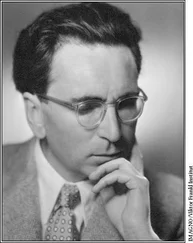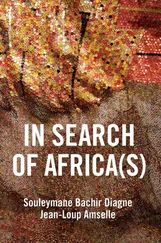“I’m sorry, Elizabeth,” he told her over the telephone, “but I have to be there.” He was suddenly aware that these final few days of freedom were nothing more than a brief prelude to a lifetime of indentured servitude, so he decided to take advantage of the time.
Professor Gödel was a short, taciturn man with the body of a flagpole; his general appearance called to mind an opossum or a field mouse, certainly not a genius of contemporary logic. Yet, it was true. He had become affiliated with the institute two years earlier, eight years after writing an article that overturned the foundations of modern mathematics.
In the course of over two millennia, mathematics had evolved in a disorderly fashion, like a tree with wild branches, twisting and wrapping around one another. Thanks to the discoveries of the Babylonians, the Egyptians, the Greeks, the Arabs, and the Indians, as well as the advances made in the modern West, mathematics had become something of a monster with a thousand heads, a discipline whose true nature nobody could even begin to understand. Mathematics was the most objective and evolved scientific instrument known to mankind, used daily by millions to resolve practical problems of everyday life. But amid all that infinite diversity, nobody knew for sure if mathematics might contain, somewhere within itself, a germ in decomposition, a fungus or a virus capable of refuting its own results.
The Greeks were the first to recognize this possibility in their discovery of the paradox. As Zeno and subsequent arithmetics and geometry scholars would prove, the strict application of logic occasionally produced impossibilities or contradictions that were not so easily resolved. The notion of the paradox went as far back as classical antiquity, in the dialogues of Achilles and the Tortoise, which refuted the notion of movement, or Epimenides’ paradox, which said a statement could be proven and refuted at the same time. Yet it wasn’t until the late Middle Ages that these irregularities began to multiply like malignant tumors. This heresy, which escaped the Pythagoreans as well as the fathers of the Church, proved that science indeed could be proven wrong, contrary to previous belief.
To put an end to this chaos, legions of scientific thinkers attempted to systematize mathematics and the laws that governed them. One of the first people to do so was Euclid. In his Elements , he attempted to derive all the rules of geometry from five basic axioms. Later on, philosophers and mathematicians like René Descartes, Emmanuel Kant, George Boole, Gottlob Frege, and Giuseppe Peano tried to do the very same thing in fields as far-flung as statistics and infinitesimal calculus, although their results were hardly conclusive. In the meantime, new paradoxes were emerging as well, such as those introduced by Georg Cantor in his set theory.
At the dawn of the twentieth century, the situation was more bewildering than ever. Conscious of Cantor’s theories and the aberrations they produced, the English mathematicians Bertrand Russell and Alfred North Whitehead joined forces in an effort to reduce the entire scope of mathematics to a few basic principles, just as Euclid had done two thousand years earlier. Together they devised something they called the type theory, which led to the publication, in 1919, of a monumental treatise entitled Principia Mathematica , which was based on an earlier tract by Russell. The purpose of the Principia Mathematica , which they worked on from 1903 to 1910, was to erase all the uncomfortable contradictions known to contemporary mathematics.
Unfortunately, the work was so vast and complex that in the end, nobody was truly convinced that all mathematical statements could be reduced to their theories without falling into contradiction at some point or another. Just a few years earlier, in 1900, a mathematician at the University of Göttingen named David Hilbert had presented a paper at the opening session of the International Conference of Mathematicians in Paris, which explained a theory that would thereafter be known as Hilbert’s Program. In this treatise he laid out a list of all the great unresolved mathematical problems, as a kind of blueprint for future mathematical research. One of these conundrums was the so-called axiom of completeness, which questioned whether the system later described in the Principia —or any axiomatic system, for that matter—was comprehensive, complete, and free of contradiction. Could any arithmetic proposition be derived through his postulates? Hilbert thought the answer was yes, as he said to his colleagues gathered together in Paris: “All mathematical problems are solvable, we all agree with that. After all, when we set out to solve a mathematical problem, one of the primary things that draws us in is that calling we hear inside: Here’s the problem, it needs a solution. And this can only be found through pure thinking, because in mathematics there is no such thing as ignorabimus .”
“Hilbert’s Program became the bible of mathematicians and logicians of the world,” Von Neumann explained to Bacon one day. “To solve even one of his equations would mean instant fame. Can’t you just picture it? Hundreds of young minds, in every corner of the world, banging their heads to solve one of the pieces of Hilbert’s great puzzle. Maybe, as a physicist, you can’t grasp the magnitude of the challenge, but everyone wanted to prove himself. Everyone wanted to show that he was the best of them all. And it wasn’t just a race against unknown rivals, either; it was a race against time. It was madness.”
“I’m supposing you had tried to solve one of Hilbert’s problems,” Bacon interjected, knowing in advance what the answer would be, but giving Von Neumann a chance to unleash his vanity like a hungry tiger.
“Well, of course I tried it, Bacon, we all tried it. In fact, we’re still trying. For months I became obsessed by the completeness axiom and the challenge it presented.” Von Neumann scratched his chin reflectively and lowered his voice a notch, as if he were narrating a great suspense novel. “Just as Professor Gödel did later on, though he had more success with it than I. At first, I thought I had found the correct approach. My intuition told me that the goal was not impossible to achieve, as I had previously thought. Have you ever had that feeling of your skin tingling, like when someone scratches their nails against a blackboard? It was incredible .”
“And so what happened?”
“All of a sudden, I was stopped cold, as if a brick wall had suddenly appeared in the middle of the road.” Von Neumann rubbed his hands as if he were about to explode. “My mind was frozen, paralyzed. I fell to pieces. The depths of failure, you know. The only thing I could do was get into bed and go to sleep until the next day. Then, when I woke up, I realized that something truly amazing had occurred: In my dreams, I had found a way to advance my equations. I had dreamed it, Bacon, like a prophet inspired by the voice of the Creator! I was frantic, and I plunged back into my papers. Now I felt certain I had it.” His hands seemed to curl around an imaginary trophy. “But then, once again, as I reached the last little bit, the inspiration vanished. Again. Just like that. And there I was again, just like the time before. Stuck.”
“Oh, wow!” Bacon knew that he was supposed to utter an exclamation of enthusiasm and beg Von Neumann to go on with the story. “So then what happened?”
“Well, I waited until nighttime, and just as I had figured, I fell into yet another deep sleep.”
“And you found the missing link?”
“Exactly! It was a kind of miracle. My proof followed a complicated, perfect line of reasoning. I was convinced that with one of Hilbert’s problems on my CV, I would become famous.”
Читать дальше












